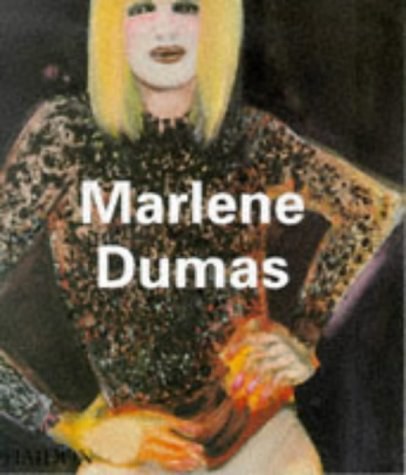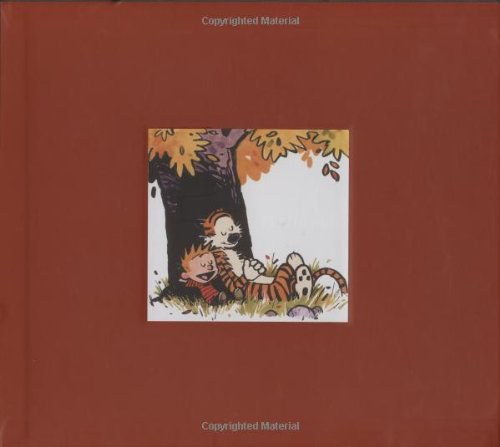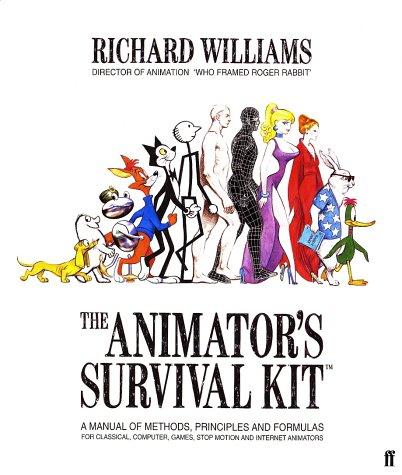
Anne E·Baker|Kees Hengeveld《Linguistics》
书刊介绍
Linguistics is a comprehensive crosslinguistic introduction to the study of language, and is ideal for students with nobackground in linguistics. A comprehensive introduction to the study of language, set apart by its inclusion of cross-linguistic data from over 80 different spoken and signed languages Explores how language works by examining discourse, sentence-structure, meaning, words, and sounds Introduces psycholinguistic and sociolinguistic issues, including language acquisition, neurolinguistics, language variation, language change, language contact, and multilingualism Written in a problem-oriented style to engage readers, and is ideal for those new to the subject Incorporates numerous student-friendly features throughout, including extensive exercises, summaries, assignments, and suggestions for further reading Based on the bestselling Dutch edition of this work, the English edition has been revised and expanded to offer an up-to-date and engaging survey of linguistics for students new to the field
作品目录
List of Figures and Tables xiii Preface xvii Part I Language and the Language Faculty 1 1 From Language to Linguistics 3 1.1 Introduction 3 1.2 Languages 5 1.3 Other Languages 9 1.4 Differences 15 1.5 Linguistics 17 1.6 Different Kinds of Grammar 19 1.7 The Contents of this Book and the Subfields of Linguistics 22 2 The Language User 29 2.1 Introduction 29 2.2 Knowledge and Ability: The Cognitive System 30 2.3 Language and the Brain 34 2.4 Language Comprehension 37 2.5 Language Production 44 3 Language Acquisition 57 3.1 Introduction 57 3.2 How Do Children Acquire Language? 59 3.3 The Order of First Language Acquisition 62 3.4 Factors that Influence the Acquisition of a Second Language 66 3.5 The Order of Second Language Acquisition 69 3.6 Bilingual Development 74 Part II Language and Interaction 81 4 Discourse 83 4.1 Introduction 83 4.2 Interpretation and Inference 84 4.3 Cooperation 86 4.4 Conversations 89 4.5 Coherence Through Linguistic Form 95 5 Speech Acts 103 5.1 Introduction 103 5.2 An Utterance is an Act 104 5.3 Information Structure 110 5.4 Pragmatic Appropriateness 114 Part III Sentences and Their Meaning 121 6 Constituents and Word Classes 123 6.1 Introduction 123 6.2 Constituents 124 6.3 Sentences, Clauses and Phrases 126 6.4 Phrase Types 127 6.5 Heads and Modifiers 130 6.6 Constituent Structure 131 6.7 Phrases Versus Words 135 6.8 Word Classes: Content Words 136 6.9 Word Classes: Function Words 138 7 Simple Sentences 143 7.1 Introduction 143 7.2 Functions of Phrases Within the Sentence 144 7.3 Valency 147 7.4 Semantic Roles 150 7.5 Grammatical Roles 151 7.6 The Marking of Semantic and Grammatical Roles 153 7.7 Reduction of Valency 154 7.8 Reflexive Constructions 155 7.9 Pronominalisation 157 8 Complex Sentences 161 8.1 Introduction 161 8.2 The Functions of Embedded Clauses 162 8.3 The Forms of Embedded Clauses 165 8.4 Interaction between Main Clause and Embedded Clause 168 8.5 Coordinated Clauses 172 8.6 The Form of Coordinated Clauses 173 9 Constituent Order 177 9.1 Introduction 177 9.2 Constituent Order and Levels of Analysis 178 9.3 Constituent Order at the Sentence Level 179 9.4 Clause Type 181 9.5 Embedded Clauses 182 9.6 Complexity 183 9.7 The Information Status of Constituents 184 9.8 Constituent Order within Constituents 185 9.9 Correlations 188 9.10 Discontinuous Constituents 190 Summary 191 10 Sentence Meaning 195 10.1 Introduction 195 10.2 Compositionality 196 10.3 Noun Phrases: Reference 197 10.4 Noun Phrases: Deixis and Anaphora 203 10.5 Verb Phrases: Tense and Aspect 206 10.6 Verb Phrases: Situation Types 210 Part IV Words and Their Meaning 217 11 Lexicon 219 11.1 Introduction 219 11.2 What is aWord? 220 11.3 The Relation Between Word Form and Meaning 221 11.4 Content Words and Function Words 223 11.5 The Lexicon 226 11.6 Kinds of Lexical Information 228 11.7 Dictionaries 230 11.8 Meaning and Meaning Relations 232 11.9 Semantic Description 235 11.10 Words Across Languages 236 12 Word Formation 241 12.1 Introduction 241 12.2 The Internal Composition of Words 242 12.3 The Functions of Word Formation 243 12.4 Derivation 245 12.5 Inflection 249 12.6 Morphological Forms 251 12.7 The Structure ofWords and Their Meanings 255 12.8 Differences between Derivation and Inflection 256 12.9 Morphological Differences between Languages 258 13 Compounds and Idiomatic Expressions 265 13.1 Introduction 265 13.2 Structure and Meaning of Compounds 266 13.3 Types of Compounds 270 13.4 Incorporation 271 13.5 Idiomatic Expressions 272 13.6 The Meaning of Idiomatic Expressions 274 Part V Speech Sounds 283 14 Speaking and Listening - Speech Sounds 285 14.1 Introduction 285 14.2 Speaking 287 14.3 The Speech Signal 288 14.4 Hearing and Understanding 291 14.5 Speech Sounds 292 14.6 Speech Synthesis and Speech Recognition 298 15 Sound Systems and Phonological Processes 303 15.1 Introduction 303 15.2 Distinctiveness 304 15.3 Sound Systems 307 15.4 Distinctive Features 311 15.5 Morphophonological Processes 314 15.6 Graphemes and Phonemes 316 16 Syllables, Stress and Intonation 321 16.1 Introduction 321 16.2 The Syllable: Phonotactics 322 16.3 The Word: Stress 326 16.4 The Sentence: Intonation 328 16.5 Rhythm 330 Part VI Languages and Communities 335 17 Differences and Similarities between Languages 337 17.1 Introduction 337 17.2 Similarities between Languages 339 17.3 Genetic Relations 342 17.4 Language and Culture 349 17.5 Language and Thought: The Sapir-Whorf Hypothesis 354 18 Language Variation 361 18.1 Introduction 361 18.2 What is a Language? 362 18.3 What is a Dialect? 364 18.4 The Study of Language Variation 366 18.5 Language Variation and Social Factors 369 18.6 Other Factors: Situation and Linguistic Context 377 18.7 Language Variation and Social Meaning 379 19 Language Change 385 19.1 Introduction 385 19.2 Historical Linguistics 386 19.3 The Process of Change 390 19.4 The Role of Social Groups in Language Change 394 19.5 Embedding Changes into the Language System 397 19.6 The Evaluation of Language Change 399 20 Bilingualism 403 20.1 Introduction 403 20.2 The Bilingual Community 404 20.3 Language Policy 407 20.4 Bilingual Education 408 20.5 The Bilingual Individual 410 20.6 Bilingualism and Interference 412 20.7 The Emergence of New Languages 418 Summary 421 Assignments 422 Test Yourself 422 Acknowledgments and Further Reading 423 References 425 Sources of Illustrations 433 Index 435
相关推荐
-

精益客户开发
Cindy Alvarez作为产品经理,Cindy Alvarez能将对客户的理解转换成为竞争优势。Cindy现任Yammer(微软子公司)用户体验和产品设计总...
-

常见脑病中医外治法
常见脑病中医外治法 内容简介 本书从中医外冶法的角度来探讨,大量参考国内相关文献,并结合作者自身的临床经验,博采众说为一体,以指导临床诊治为宗旨,突出脑病治疗中...
-

秦谜
秦始皇短短49年人生却迷雾重重。秦始皇的爸爸是吕不韦?昌平君有着怎样的双重身份?秦始皇的表叔怎么成了末代楚王?秦始皇的后宫为何集体失载?坑儒是秦始皇背了几千年的...
-

John Curran《阿嘉莎‧克莉絲蒂的秘密筆記》
克莉絲蒂一九七六年以八十五歲高齡與世長辭,從此成了全球最受歡迎的作家。迄今小說全球銷售量超過二十億本的她,生前完成了不可
-

监控录像系统中人像鉴定问题研究
监控录像系统中人像鉴定问题研究 本书特色 《监控录像系统中人像鉴定问题研究》是由上海人民出版社出版的。监控录像系统中人像鉴定问题研究 目录 **章 监控录像系统...
-

光荣日
韩寒,1982年9月23日生于上海金山区亭林镇,中国有国际知名度的青年之一。他是年少成名的畅销书作家,自本世纪初出道,十八年来始终保持在中国畅销作家TOP3之列...
-

原谅我吧我的猫
* 十四篇妙趣横生的随笔* 猫咪般从心所欲的生活态度* 佐野洋子的创作原点* “我现在一遇到这种猫,就想双膝跪地向它道歉。”《原谅我吧我的猫》是佐野洋子带有自传...
-

井下设备技术问答
井下设备技术问答 本书特色 《油田设备技术问答丛书:井下设备技术问答》可作为现场从事井下设备操作人员的学习用书,亦可作为大中专院校师生及现场技术人员的参考用书。...
-

Antony|N·Hornstein N|Louise M·Antony《Chomsky and His Critics》
Inthiscompellingvolume,tendistinguishedthinkers----WilliamG.Lycan,GalenStrawson,...
-

Distributed Algorithms
In "Distributed Algorithms", Nancy Lynch provides a blueprint for designing, imp...
-

地铁列车振动环境影响的预测.评估与控制
地铁列车振动环境影响的预测.评估与控制 本书特色 《地铁列车振动环境影响的预测、评估与控制》是国内首部全面、系统地介绍地下铁道振动环境影响及控制措施的专著。全书...
-

Developing Large Web Applications
As web applications grow, so do the challenges. These applications need to live ...
-

互联互通的金融大时代
作品目录序言 让世界走向中国第一部分 香港金融业的大时代第二部分 资本的逻辑与监管的选择第三部分 互联互通与共同市场第四部分
-

金牧场
《张承志作品系列·卷三·长篇小说:金牧场》是张承志十几年创作生涯的掠影,二十年个人经验的沉淀,生活之旅的探讨,思想之路的追索,被称为中国新时期文学中最有震撼力的...
-

第七感
《第七感:心理、大脑与人际关系的新观念》以心理学为理论基础,通过解释大脑复杂的运作机制,讲述了心理和大脑的协同作用。将古老的冥想实践与现代神经科学、心理疗法进行...
-

洋相
冯骥才先生,中国当代著名作家、文学家、艺术家。他初学画,后以“伤痕文学”享誉文坛。他的《三寸金莲》《俗世奇人》等脍炙人口的作品,在中国当代文学史上留下了浓墨重彩...
-

それでも町は廻っている 09
石黒 正数(いしぐろ まさかず、男性 1977年 - )は、日本の漫画家。福井県出身。既婚。大阪芸術大学芸術学部デザイン学科卒。在学中に所属していたサークルの同...
-

Stephen Mead《Selected Works》
FirstpresentedasLuluebooks,StephenMeadhascollectedthebestofhisawardwinningpoetry...
-

济南古建筑轶事
济南古建筑轶事 本书特色 晋葆纯、李亚菲著的《济南古建筑轶事》立足于山东济南这座半殖民地城市,展望清朝末年以来的历史春秋,对《中德胶澳租借条约》的前后往事进行了...
-

让爱先行
《让爱先行:韦德自述》内容简介:德韦恩•韦德奇迹般地抓住了篮球生涯中的所有机遇,同时也在寻求他最珍爱的目标:做一个好父亲。经过了漫长、痛苦的离婚和监护权争夺战,...





